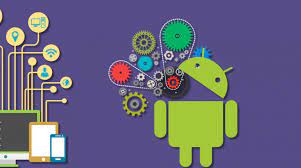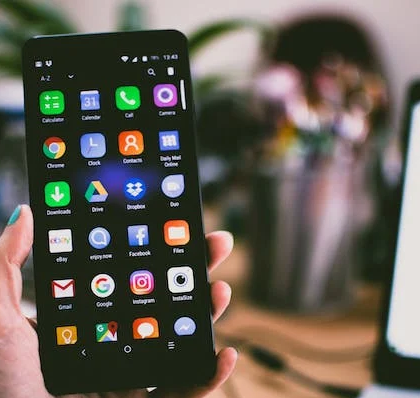
Being one of the most widely used mobile software globally, Android holds a stake of more than 70% of users globally. Moreover, it is open-source and user-friendly software, opening a world of opportunities for developers and giving them the flexibility of using codes, platforms, and algorithms for Android App Development. At the same time, it equally enables the companies and organizations to expand their reach to the masses to harness the good fruits, as approximately two-thirds of the 3 billion smartphone users employ smartphones powered by Android, and it is increasing continuously at an exponential rate.
More than 3 million Android apps are already available in Google Play Store, and more than 100,000 new apps are being added every month. Apart from the popularity of android apps among the masses, a challenge arises for app developers to stand out from the crowd. Grabbing the users’ attention forces them to create easy, convenient, and user-friendly software. Being a developer, you need to know the below-mentioned seven android app development trends in 2021 and the foreseeable future to win an edge over others.
Table of Contents
1. Code Integrity should be a priority.
Code integrity is the algorithm to protect the software code from being tempered and manipulated. Software piracy and tampering with the code have been unfortunate challenges for the developers. Let’s say software has been developed by you, and users are using it on a big scale. Some bad guy tampered with your code and embedded in it a virus or something unethical. Who will be the one to face a loss and lose the trust of users?
To knock down this unfortunate challenge, you must invest in a cost-effective cheap code signing certificate. It authenticates you as a trusted developer of the app and encrypts your software code, guaranteeing the user that the code has not been tampered with since it was signed. This ultimately generates a sense of trust among users, which leads your app to be downloaded more in the future, resulting in good revenue.
2. Instant Apps are in trend.
Instant apps are one of the latest trends and have been proven to be a game-changer, as it allows users to experience these apps without actually downloading or installing them on their mobile devices. In this process, users do not need to go through many processes, which ultimately delivers a much better experience.
Users do not need to download the apps on their smartphone devices, which saves a lot of storage. Furthermore, instant apps do not use phone resources as it runs over the internet connection. In addition to this, it gives the developers an advantage of editing or changing the app content anytime. At the same time, Instant Apps makes you worry-free of compatibility issues.
3. M-commerce
As covid-19 hit globally and created unprecedented situations, and forced sellers and retailers to move to e-commerce platforms of their own or some third party. As lockdowns were there and markets were down, sellers and retail stores faced a huge loss, making them prepared to move online. And according to Statista, 73% of the total Ecommerce sales will be from mobile devices.
Some recent studies confirm that global m-commerce will generate over €2.8 trillion in revenue in 2021. And this trend is only set to increase in the upcoming years. To provide customers a seamless experience of the services, developers are integrating one-click ordering, voice shopping, and omnichannel retail.
4. Folding Display device apps
Folding displays are attracting more users, as they can be folded, expanded, or split in half according to the need and convenience of the users. Major smartphone industries, i.e., Samsung, LG, Motorola, etc., have already launched their devices with the aforementioned display configurations and are experiencing high demand. As a result, they have changed and revolutionized the smartphone app development industry. Therefore, apps are to be made to optimize according to the state of the display, whether it is splitting or folded.
At the same time, it is both challenging and an opportunity to develop the apps for these kinds of displays, as creating the apps for foldable displays is a complex task.
5. Mobile Wallets will be there.
Mobile wallets are becoming very popular among people due to their ease of use and hassle-free payment experiences. A few names that you might have heard of include Paytm, google pay, amazon pay, PayPal, etc. are all examples of mobile wallets. They are becoming popular, and the user only needs to link their card or bank accounts with them and can seamlessly use and experience these apps to pay their bills, book movie tickets, pay for their groceries, shop on Ecommerce websites, or transfer money to their known ones and family members. Furthermore, app developers constantly enhance the existing wallets by using different technologies, i.e., NFC, RFID, etc.
According to some researches by Statista, by 2024, over 1.7 billion people worldwide will be using mobile wallets regularly, and over time they are expected to take over the traditional payment methods. So developing and creating mobile wallet applications opens a world of opportunities for android app developers.
6. Virtual Assistants, Chatbots and AI
The involvement and evolution of machine learning and Artificial Intelligence (AI) have made things simplified and tasks easy. With a single voice command to your Google Assistant, you can access the piece of information you are searching for, can set the alarm, can set a reminder, and much more. How has it become possible? It’s Artificial Intelligence. It is smart to the extent that it learns from user behavior and usage patterns.
Chatbots also work on the same line. Many businesses have switched to Automated Chatbots and have cut their cost to a considerable extent. Chatbots are automated customer support chats that resolve customers’ queries and issues over the conversations.
By seeing these trends, android app developers must keep a close eye on AI, Chatbots, and Virtual Assistant while developing an app. Integrating these all in the app makes it advanced and on the pace of the timeline.
7. Wearable and IoT Apps
Wearables like smartwatches, smart jewelry, body sensors, and even smart lenses and IoT-enabled devices are in trend and are the future.
It’s interesting and unique that you can control and communicate with these devices by using your smartphone. And for this, you need an app in which you can track your body stats and control your IoT-enabled appliances, i.e., CCTV Cameras, Home Appliances, Lights, and others in the line. Wearables have become hugely profitable in the healthcare industry to track and analyze body movement, heartbeat, blood oxygen levels, body temperature, and much more. Many people also use wearables for their pets to keep them in their reach, IoT-enabled tags to keep track of their belongings.
Developing and upgrading apps for wearable and IoT devices is a big trend in 2021. We can say that “ possibilities are limitless.“
Last but not least: A conclusion
Mobile app development is constantly changing. With each passing day, new apps and technologies are emerging at some corner of the globe. To stay ahead and gain an edge over the competitors, businesses, and app developers have to keep an eye on the latest trends in innovation and technology of app development.
With the introduction and launch of 5G networks and technologies like Augmented Reality, Virtual Reality, Machine Learning, and Artificial Intelligence, the face and future of the smartphone have changed entirely in view to provide a seamless experience to the users and get their attention. So, to stay ahead or in the competition, we have to keep an eye on the ongoing and upcoming trends.



